Brick landscaping brings timeless warmth, a satisfying tactile feel, and near-endless design flexibility to any yard. Whether you dream of crisp formal beds or playful cottage curves, the humble fired-clay block can shoulder structural loads, edge paths, and add visual rhythm without ever looking dated. Because bricks come in standardized sizes, even DIYers can lay them in patterns that feel custom — saving money while gaining serious curb appeal. From small-space herb spirals to grand patio statements, bricks invite you to think in layers, colors, and textures. Ready to translate that versatility into your own yard? Explore these inspiring, step-by-step ideas.
1. Gentle Curved Brick Border
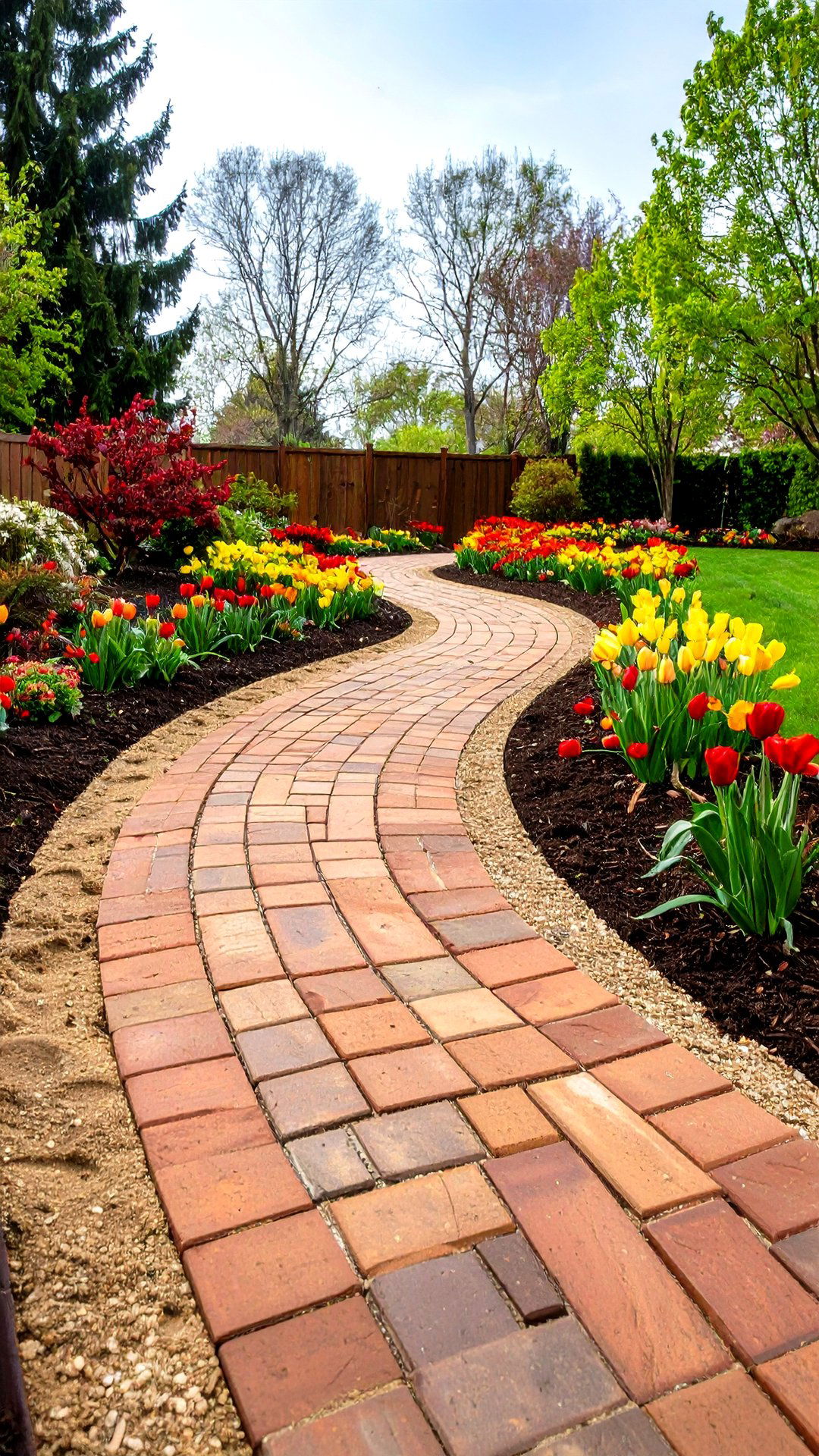
Unlike rigid concrete edges, a gently arcing brick border introduces graceful movement that leads the eye through planting beds. Lay your bricks flat in a single row, burying the bottom third in tamped sand so frost heave can’t pop them out. Setting a garden hose as a flexible guide lets you tweak curvature until it feels effortless, then cut the trench along that line. Because each brick shows a slightly different fired tone, the curve looks organic — as though it has always belonged there — while still keeping mulch neatly contained and mower wheels safely away from stems and petals.
2. Soldier-Course Path Edging
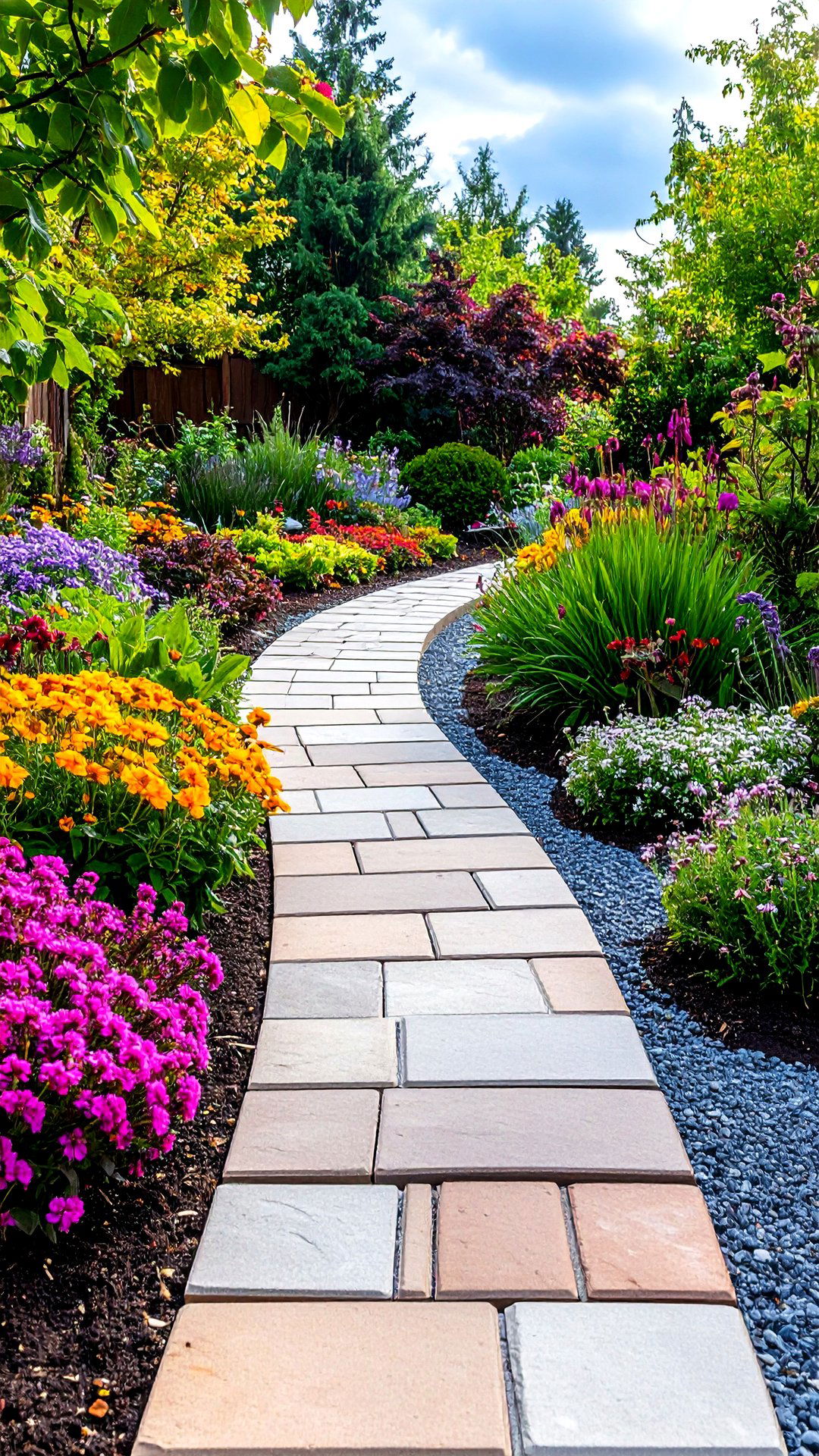
A crisp soldier course — bricks stood on end, long sides vertical — creates a miniature retaining lip that holds gravel or decomposed granite in place on garden paths. Mark the path’s perimeter, dig a narrow trench the brick height plus 2 cm, and compact crushed stone for drainage. Tap each brick in tight shoulder-to-shoulder with a mallet, checking a level every metre so the line doesn’t wander. The raised edge neatly defines walking space without a bulky curb, and the tall profile discourages bark mulch from migrating onto the path, saving sweeping time after every windy afternoon.
3. Herringbone Patio Extension
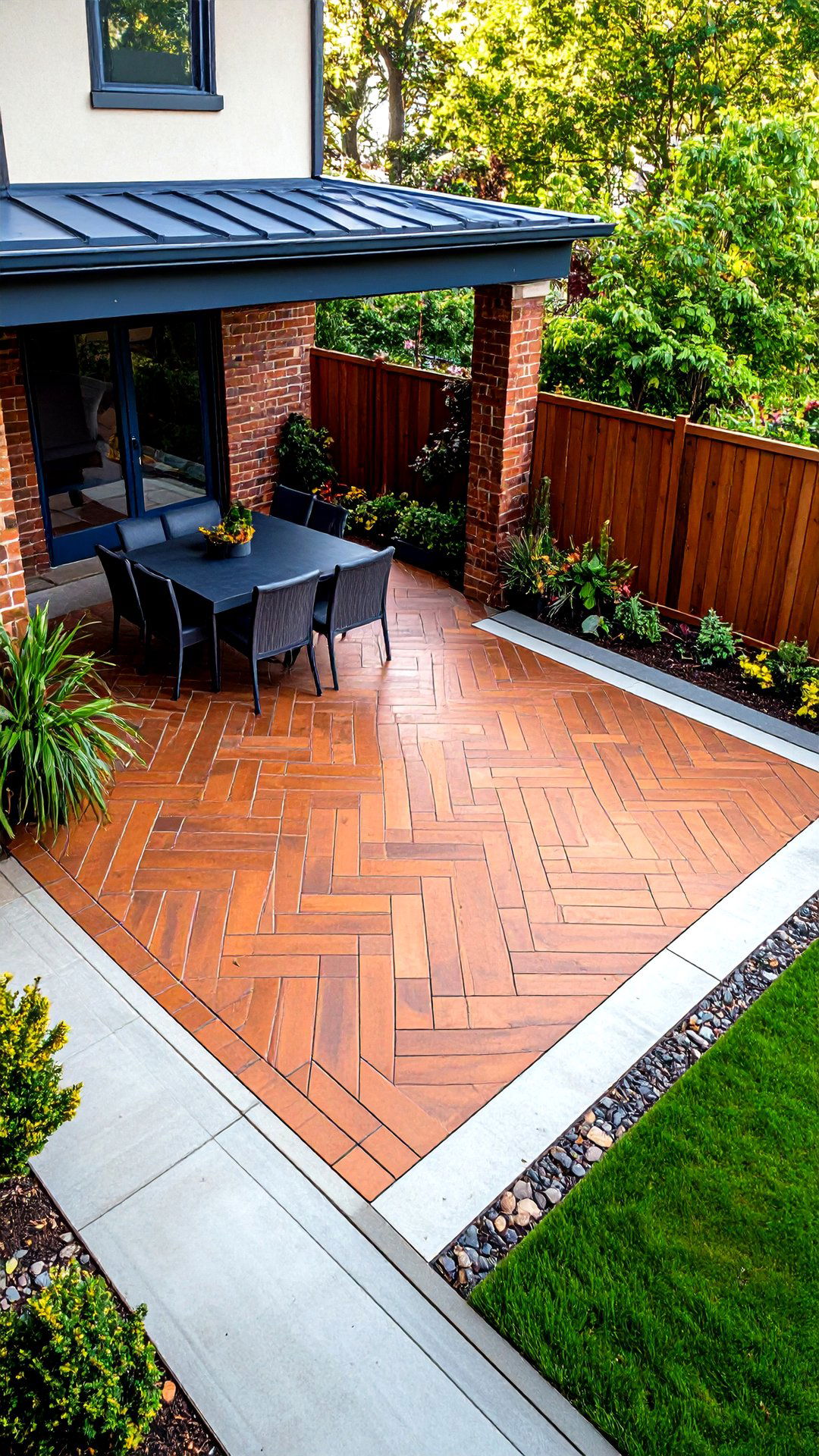
For patios that need fresh life, dovetail a herringbone brick apron onto the existing slab. Start by cutting a straight saw kerf in the concrete’s edge to accept a metal L-trim; this becomes your level reference line. Dry-lay bricks at 45 degrees, alternating directions to form the classic “V, ” then set them in a 5 cm mortar bed. The zig-zag pattern resists shifting better than running bond, and the change in orientation visually widens tight patios — handy near narrow townhouse fences. Seal the finished surface with breathable siloxane to keep earthy tones bright while repelling barbecue grease.
4. Raised Brick Vegetable Beds
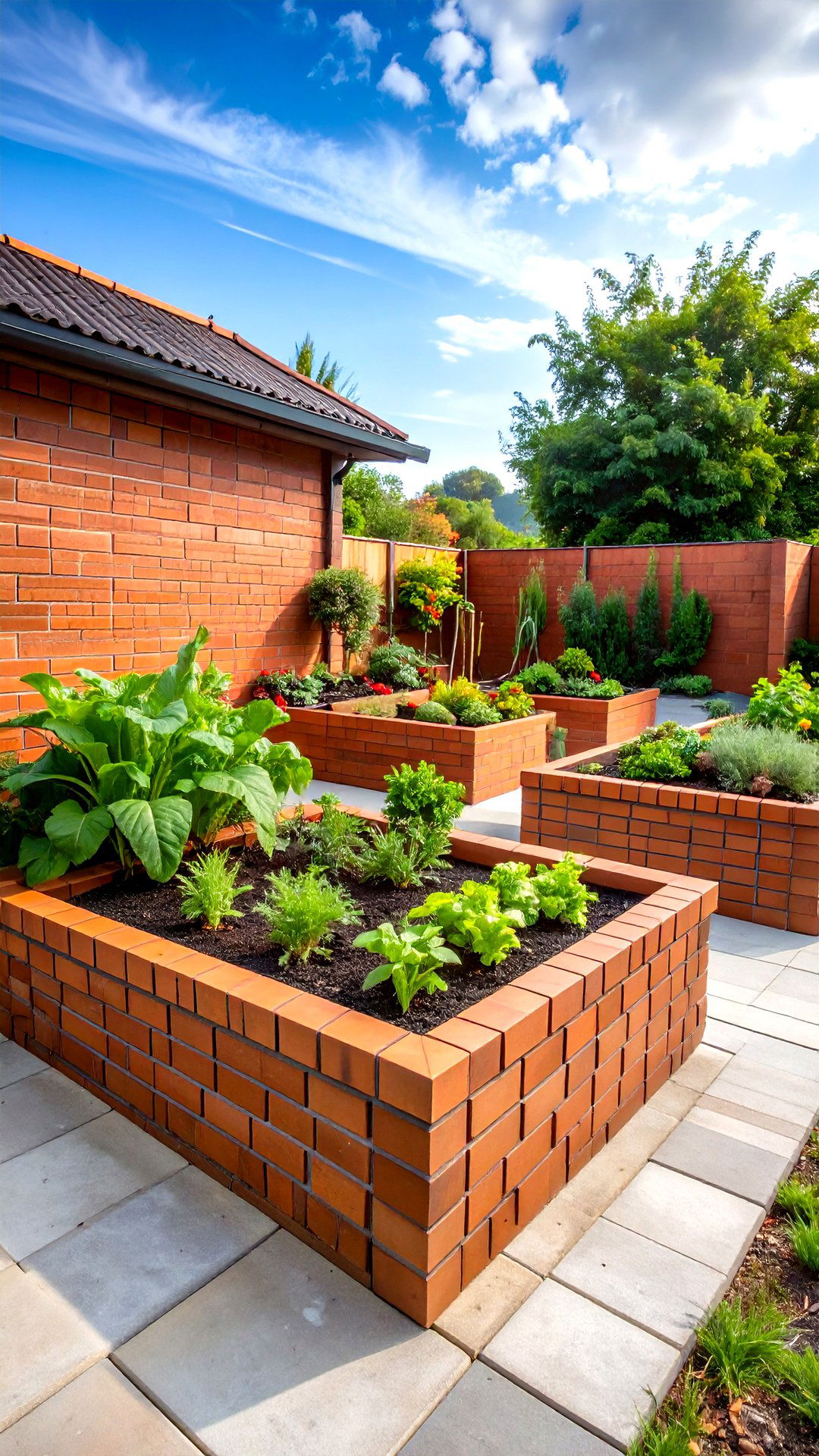
A 45-cm-high brick bed warms soil faster than timber, letting tomatoes set fruit weeks earlier. Lay three stretcher courses on a concrete footing, butting every third brick at right angles as a tie. Cap with bullnose bricks for a smooth perch where you can sit while weeding. Because bricks breathe, excess water evaporates through joints instead of rotting boards. Add a strip of copper tape along the capstone to deter slugs, and you’ve built a food-growing station that may outlast the mortgage — no turquoise stains or warped planks to replace in ten years.
5. Circular Brick Fire-Pit Seating
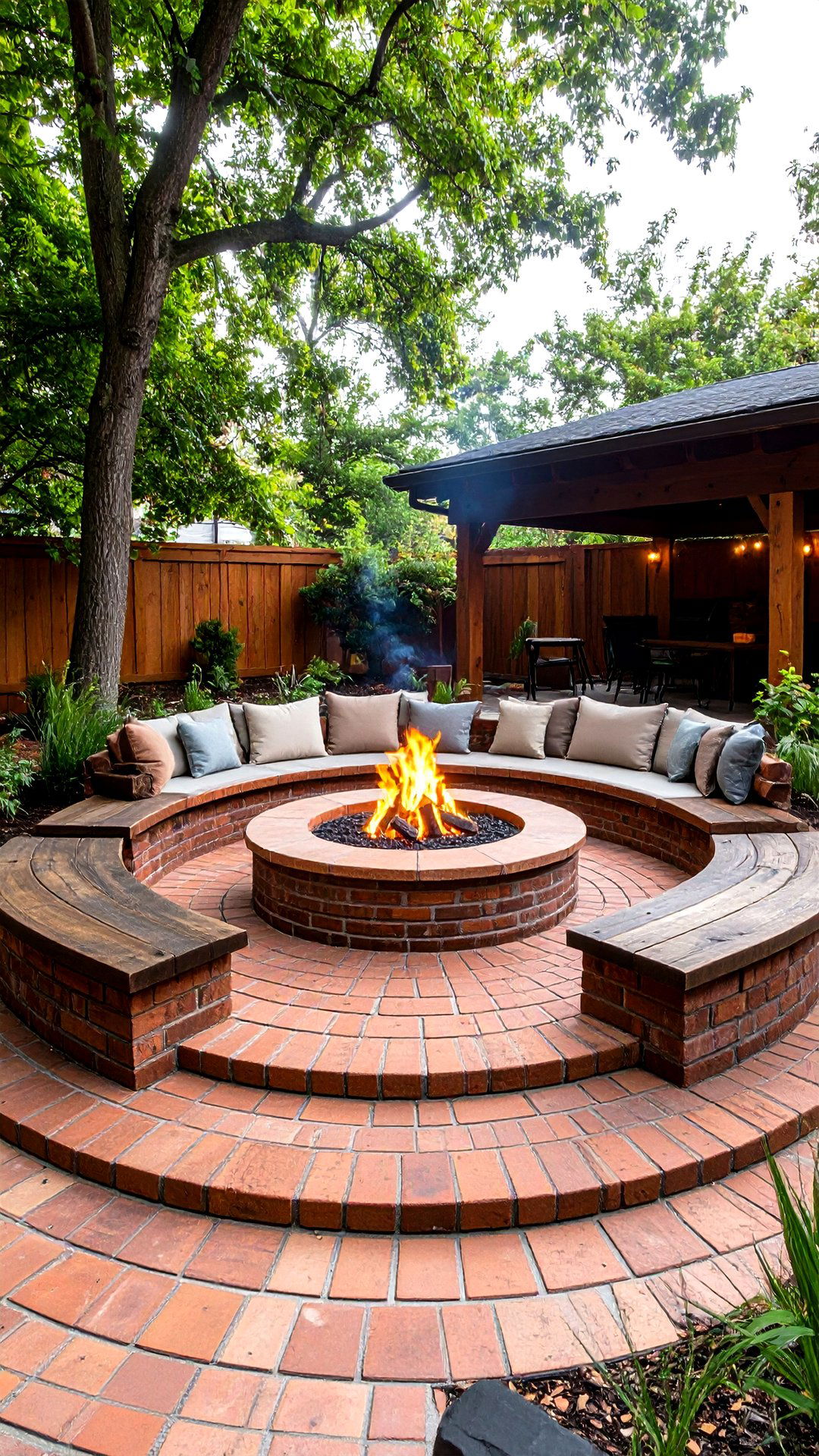
Picture a twilight gathering ringed by low brick benches radiating outward from a steel fire bowl. Dig a 3 m-diameter circle and gravel it for drainage, then lay bricks flat in concentric rings for the patio floor. Build semi-circular benches two bricks high with wide salvaged-wood slabs as tops. The repeating radial joint pattern strengthens the surface, and the brick’s thermal mass stores daytime heat, releasing it long after embers fade. Scatter durable seat cushions, and you have a year-round social hub that feels handcrafted yet solid as old-world masonry.
6. Brick Mow Strip Along Lawn
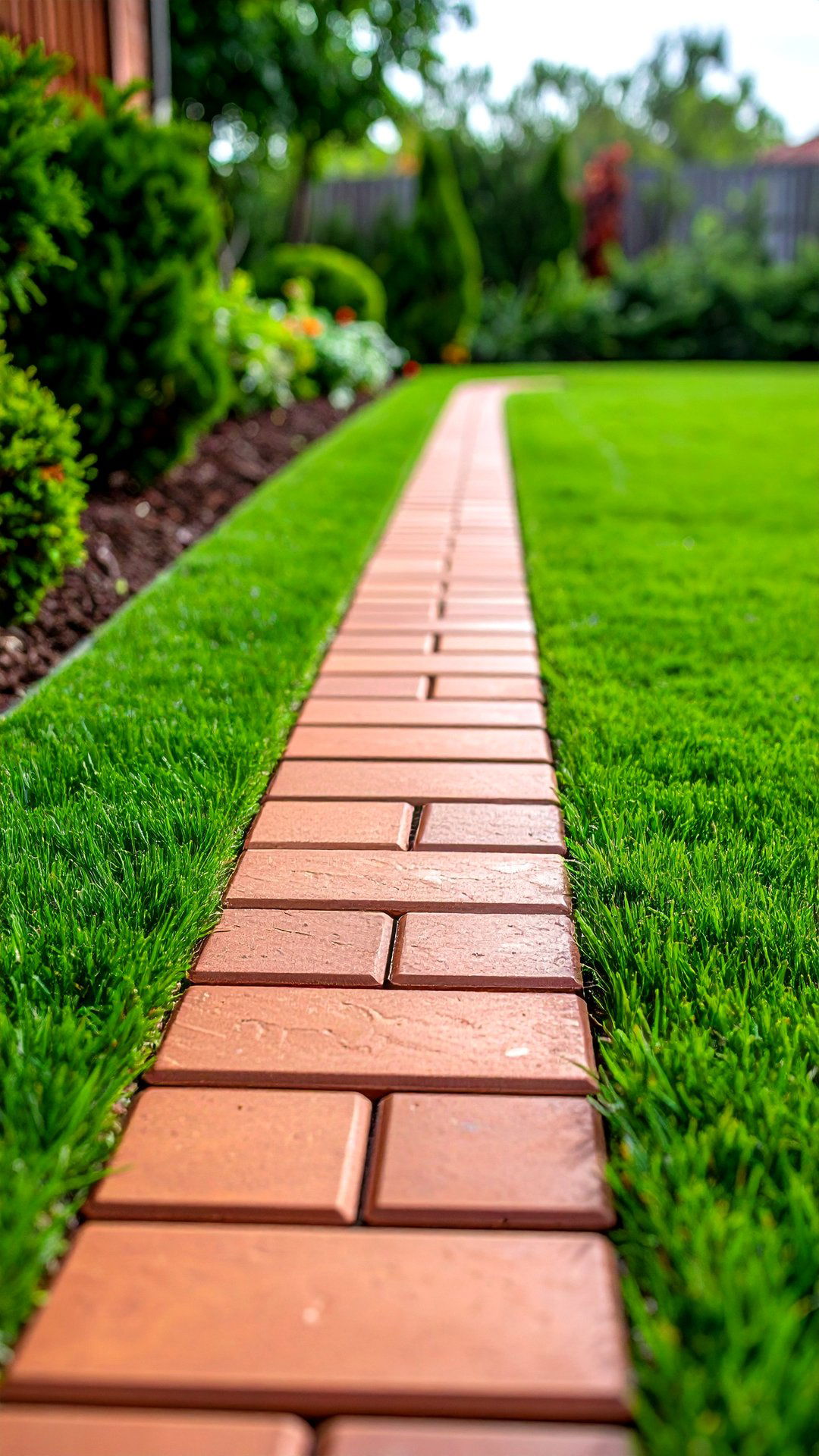
A flush-set brick mow strip eliminates hand-trim headaches where turf meets beds. Excavate a 10 cm-deep trench the width of a brick plus 3 cm. Bed bricks in sand so their top sits level with the grass; mower wheels glide on this hard edge, trimming blades right to the border without scalping. Choose paver bricks rather than softer reclaimed house bricks for durability against mower impacts. The subtle color band also acts as a visual reminder not to step into delicate perennials while tossing a football across the yard.
7. Brick-and-Gravel Ribbon Walkway

For airy cottage gardens, alternate single bricks and 10 cm gravel joints in a “ribbon” path that drains like a charm. Lay pressure-treated edging boards first, then set bricks at 30 cm intervals on a sand bed. Fill gaps with pea gravel raked flush. The repeating brick units anchor the design while the gravel spaces reduce material costs and allow rainwater to percolate, making this walkway ideal beside downspouts or on slightly sloped terrain. Over time, thyme or creeping sedum can self-seed in pockets, softening lines without undermining stability.
8. Brick Tree-Ring Planter

Encircle a mature tree with a two-course brick ring to protect bark from string trimmers and add planting real estate. Keep the inner edge 15 cm from the trunk to avoid girdling roots. Dry-stack bricks without mortar so the wall can flex with root growth; then backfill with a light compost mix perfect for shade-tolerant annuals. The ring doubles as a handy seat for tying shoelaces before yard games, and fallen leaves collect inside where they break down into natural fertilizer instead of matting the lawn.
9. Staggered Brick Retaining Terrace

Where a garden slopes, step small terraces no taller than four bricks high, each offset half a brick from courses below for strength. Pin the wall every metre with concealed rebar sunk into concrete footings, and install perforated drainpipe behind to shed water. Terracing turns an unusable bank into flat micro-gardens that catch rainfall instead of eroding. Plant herbs on the sunny upper shelf and ferns below; the bricks’ thermal mass evens temperature swings, creating snug root zones and a layered tapestry of textures.
10. Brick Water-Feature Surround
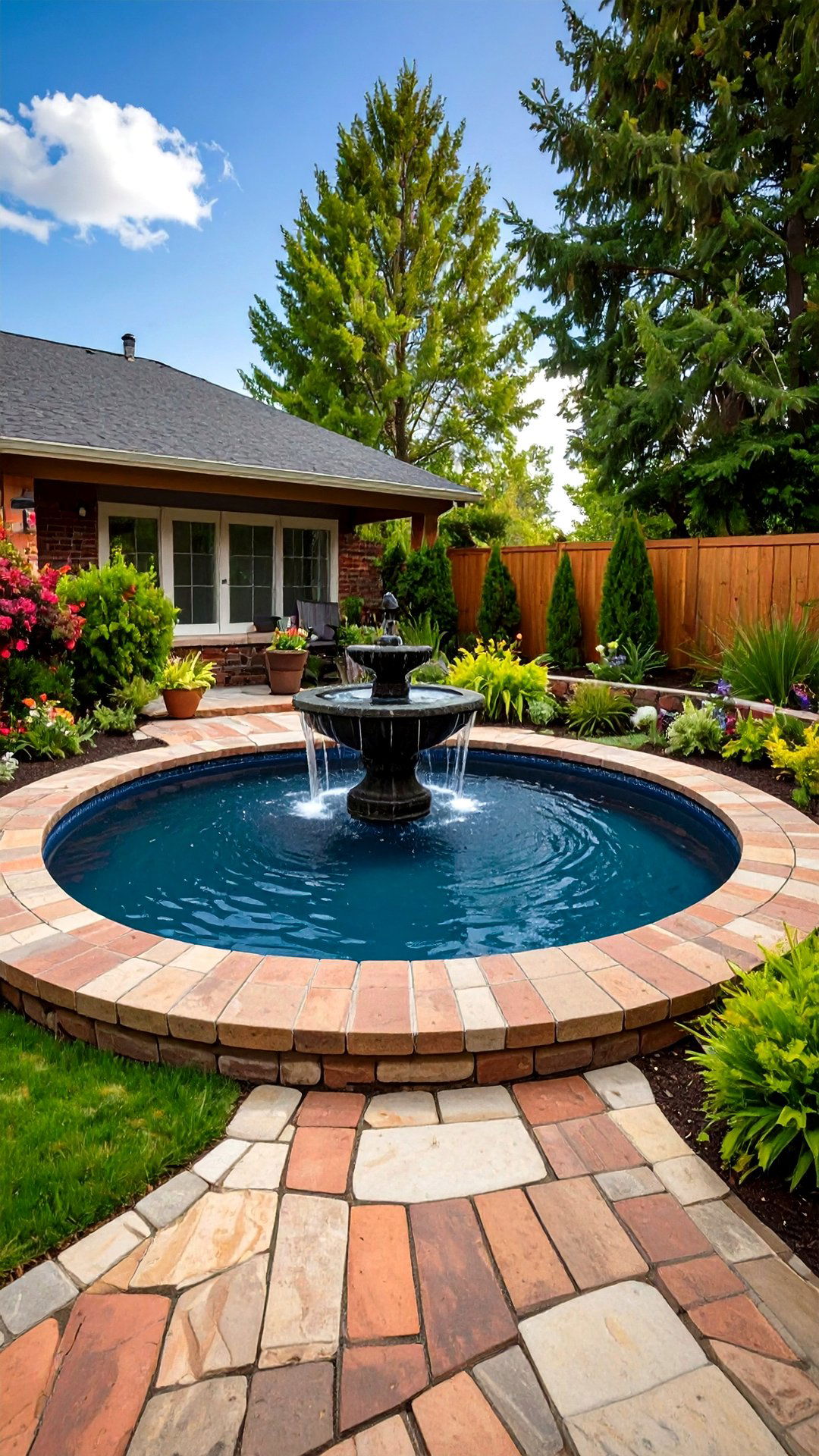
Frame a recirculating basalt column or ceramic pot fountain with a dry-stacked brick pool only 30 cm tall. Line the inside with EPDM pond liner, fold edges over the top course, and conceal with a bullnose coping. Bricks echo the fountain’s earthy materials while offering a sturdy seat to appreciate burbling sounds. Because liner and pump can be removed seasonally, the feature is easier to maintain than poured concrete basins, and in winter the empty shell doubles as a festive planter filled with evergreen boughs and twinkle lights.
11. Basket-Weave Courtyard
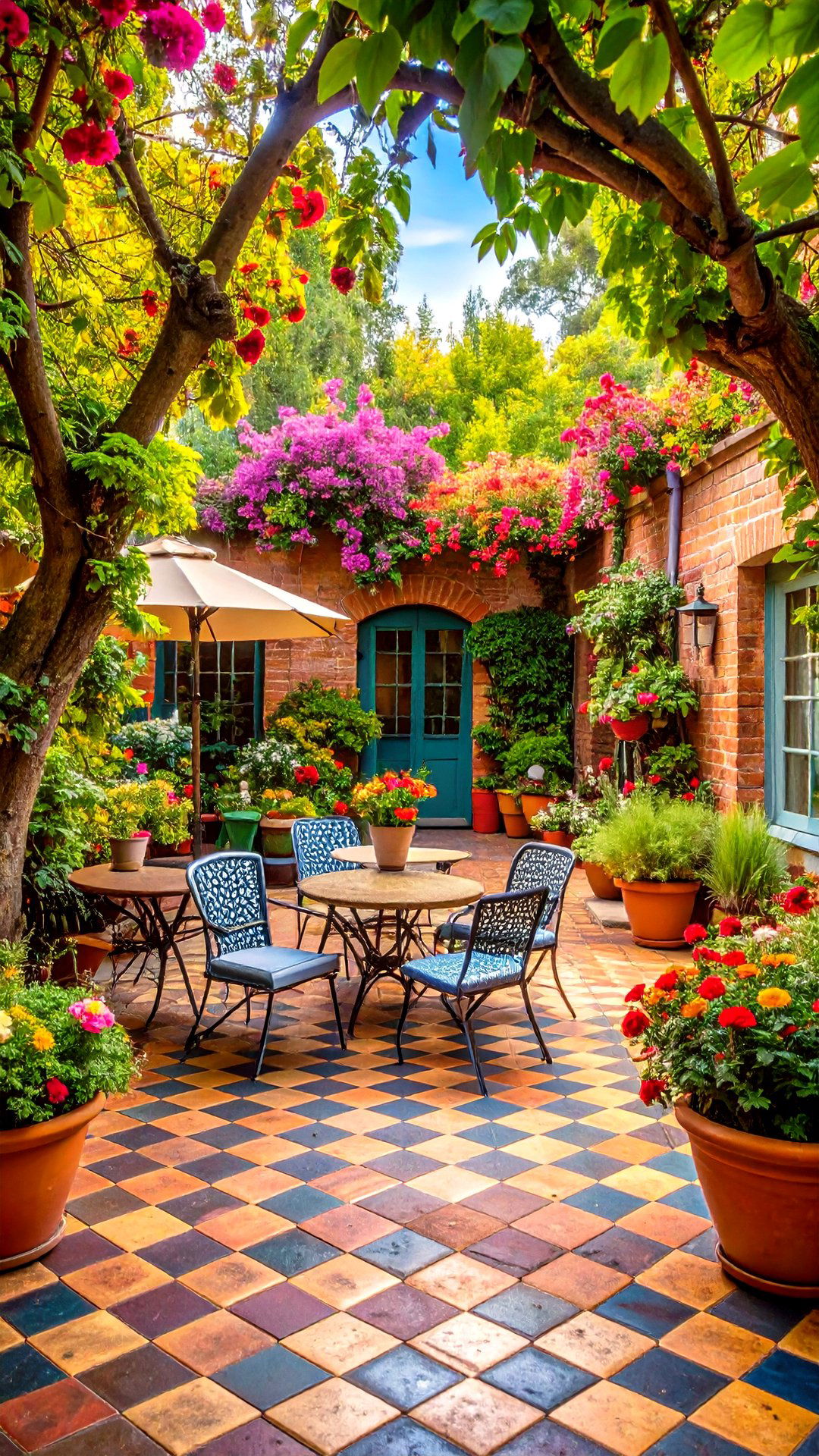
A basket-weave pattern — pairs of bricks set horizontally, then vertically — creates checkerboard charm that hides minor size variations in reclaimed stock. Snap chalk lines every 60 cm to keep rows true, and start the weave from the longest, straightest edge of the house. Tiny 5 mm spacers ensure uniform joints you can later sweep with polymeric sand for weed resistance. The alternating orientation diffuses foot-traffic stress, making this layout perfect under a bistro set where chair legs pivot. Finish with a breathable matte sealer to deepen brick color without plastic sheen.
12. Spiral Herb Tower in Brick
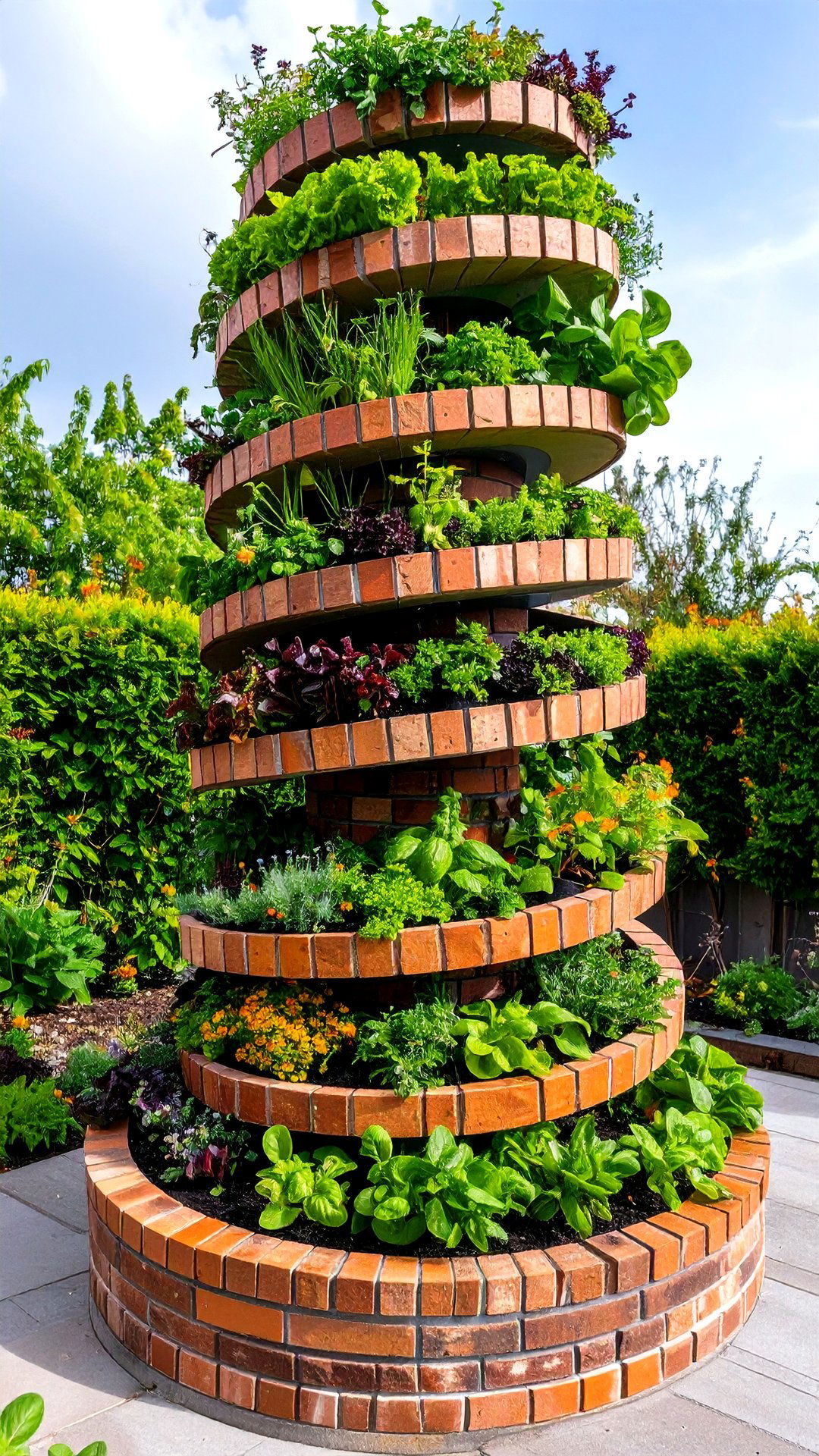
Take advantage of vertical space by stacking bricks in a tightening spiral three courses high, leaving planting pockets between levels. Begin with a one-metre-wide circle, then overlap each orbit inward by half a brick until reaching the 45 cm apex. Fill core and pockets with free-draining soil: Mediterranean herbs like rosemary sit at the top’s sunniest, driest spot while mint enjoys the shade and moisture near the base. The helical form creates microclimates, and brick’s thermal mass keeps night temperatures stable, giving you a compact, sculptural kitchen-garden centerpiece.
13. Mixed Brick-and-Stone Mosaic Patio
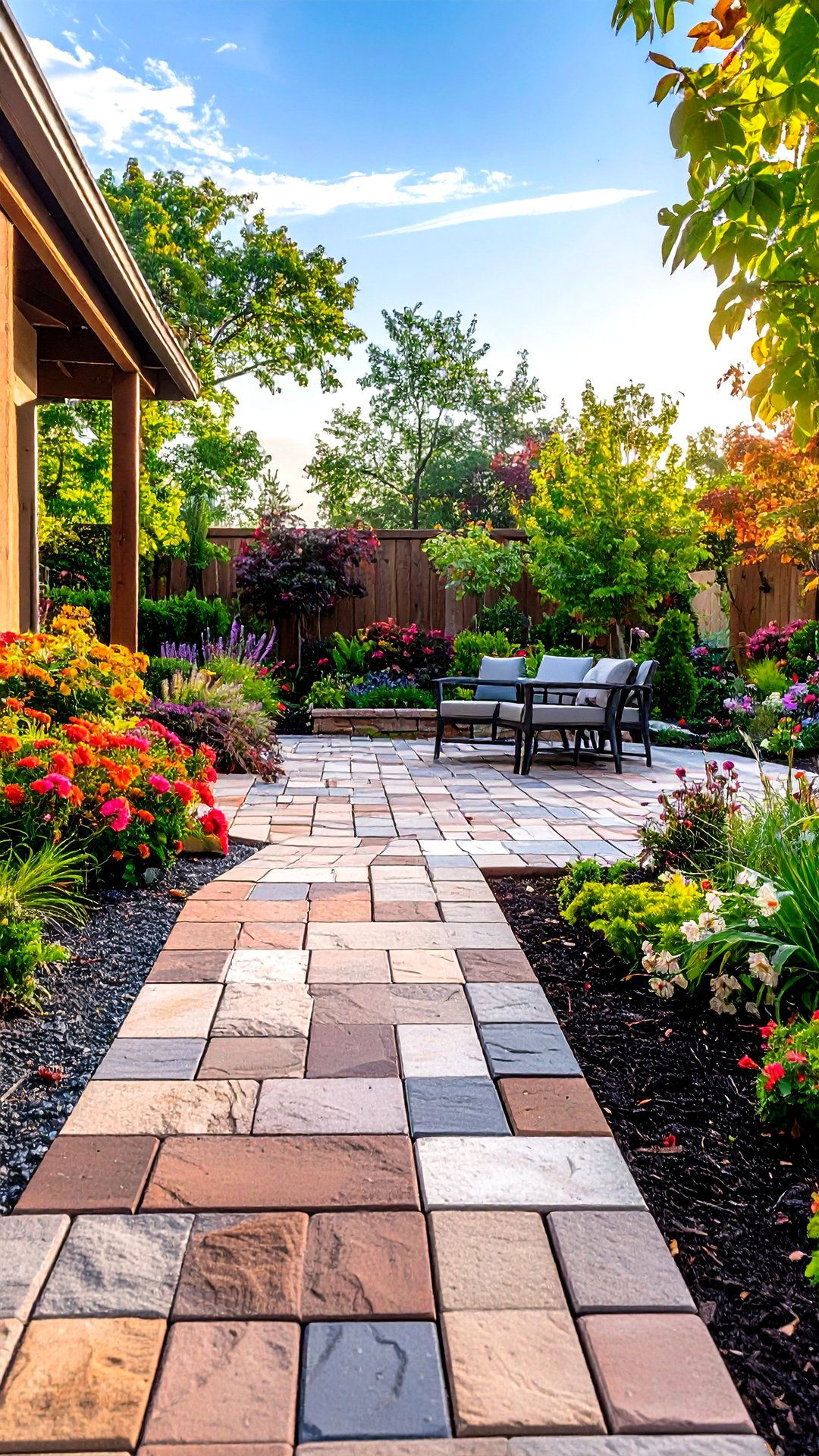
Combining bricks with irregular flagstone pieces in a mosaic unlocks color depth and upcycles leftovers. Dry-lay the flagstones first, leaving brick-sized voids that you later infill for contrast. The rectilinear bricks set off the organic stone shapes, creating a patchwork reminiscent of old European courtyards. Sweep tamped decomposed granite into joints instead of mortar so the surface breathes, reducing puddles during monsoon rains while still feeling smooth underfoot. Periodic re-sanding every few years is far cheaper than grinding out cracked mortar lines.
14. Low Brick Seating Bench
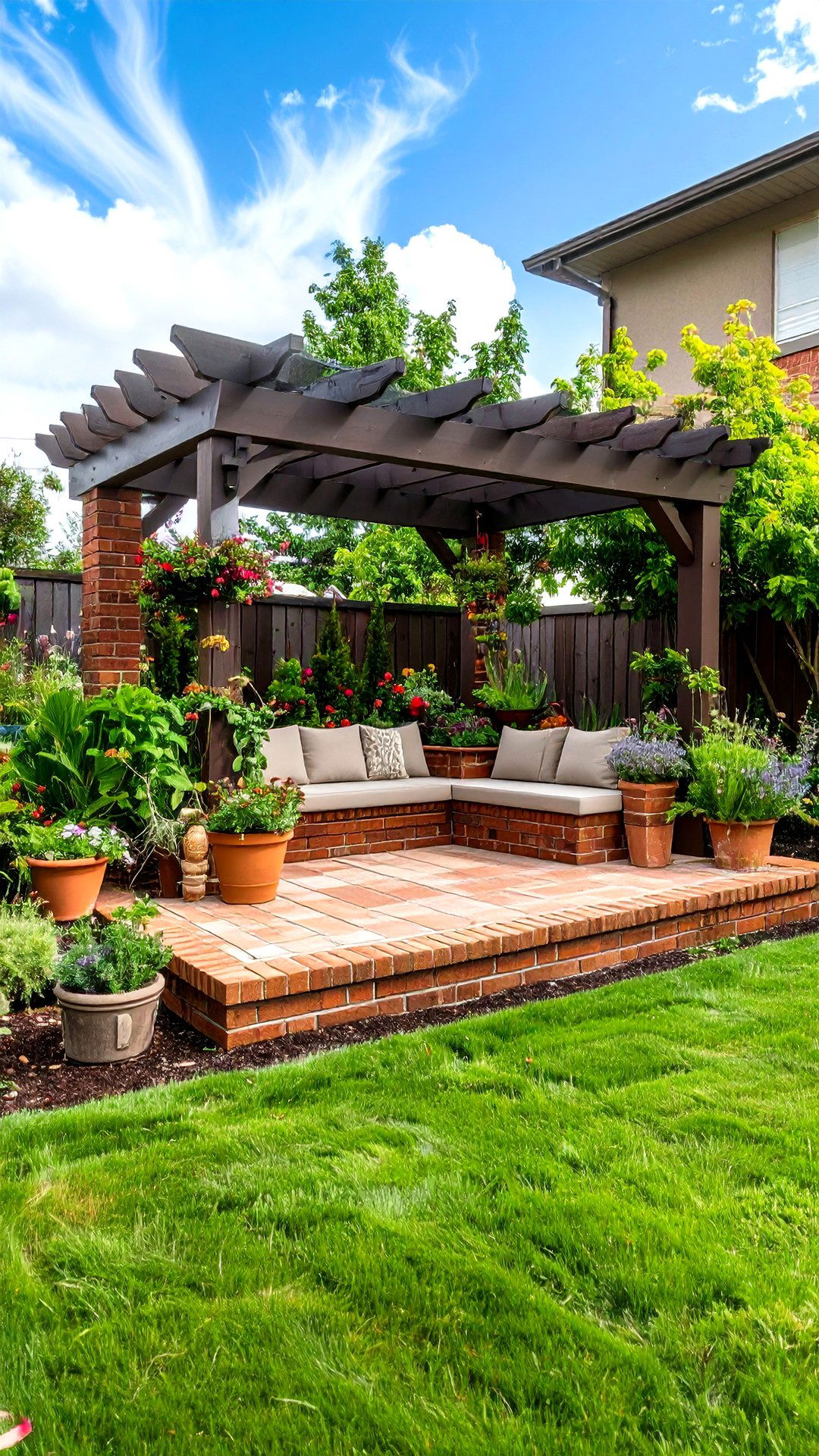
By, say, trading plastic chairs for a permanent brick bench, you cut clutter and gain an all-weather perch. Lay two parallel brick walls 30 cm apart, three courses high, joined every 60 cm with transverse bricks for stability. Top with a 5 cm redwood slab sealed in spar varnish. The slim cavity underneath stores outdoor cushions or children’s garden toys. Unlike freestanding furniture, the bench visually anchors a patio’s edge, reassuring guests that the seating plan is intentional and letting you tuck container herbs behind for fragrance.
15. Brick Steps Through a Slope
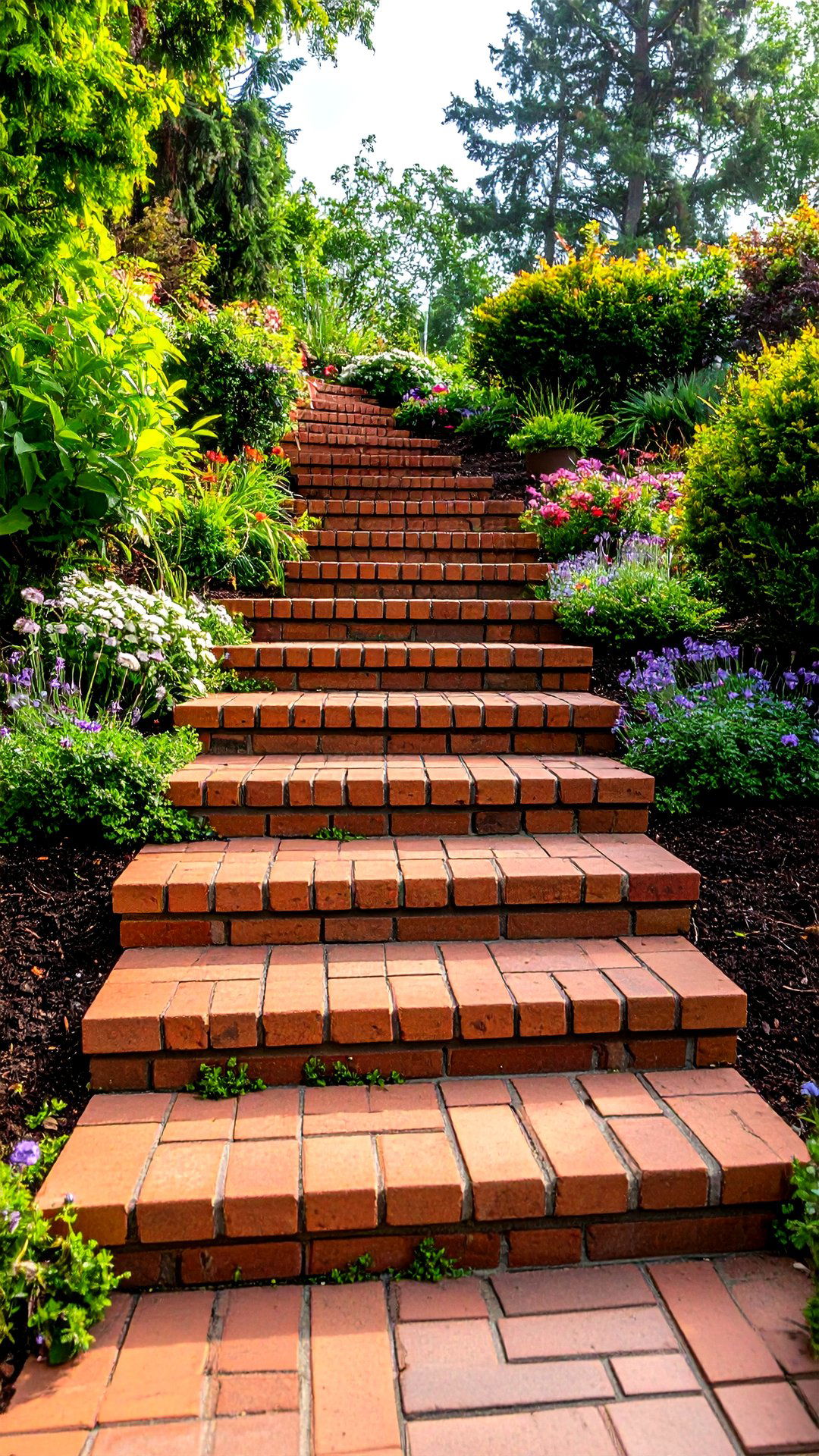
Owing to their modular consistency, bricks excel at low garden steps where poured concrete might crack. Excavate 15 cm deep, insert a treated timber riser flush with ground, then lay two rows of bricks on a sand-cement base for the tread. Repeat upslope, ensuring a gentle 16 cm rise. Brick faces echo nearby retaining walls, tying hardscape together while the slightly rough surface adds traction. Plant creeping thyme between side joints for fragrance released under footfalls — an elegant safety feature that smells like summer.
16. Classic Flat-Lay Flower-Bed Edge
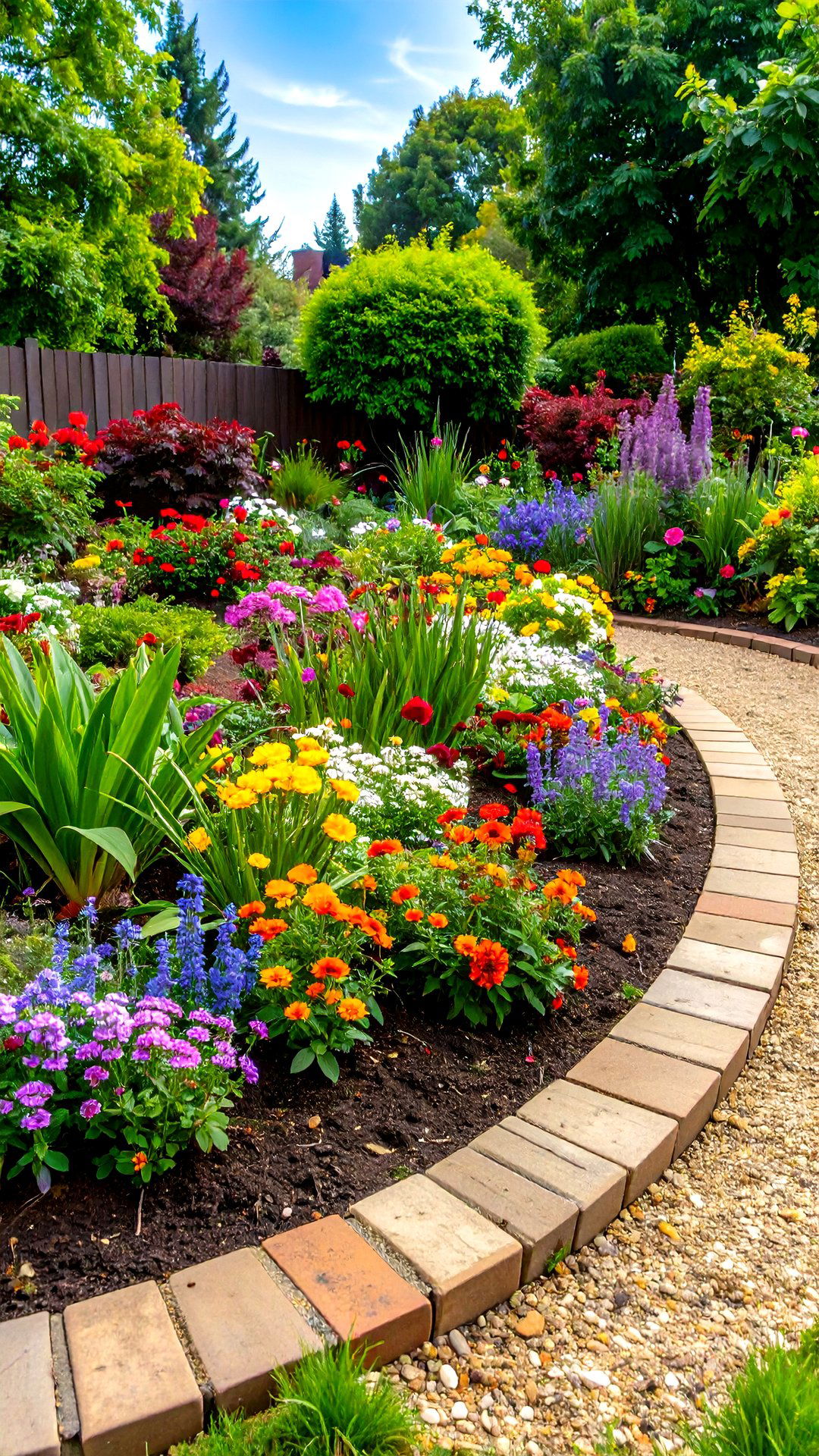
For gardeners craving vintage charm, a simple single-row, flat-lay brick edge never fails. Set each brick lengthwise atop a compacted sand bed, half-burying to create a subtle lip that keeps mulch where it belongs. According to The Spruce, flat-lay edging is both beginner-friendly and ideal for blending with existing paths because it sits nearly flush with grade, avoiding trip hazards. Annual refreshes mean only sweeping off fallen petals — no repainting, no rust removal — letting you focus on color pairings instead of maintenance.
17. Brick Apron at Driveway Mouth

Consider a contrasting brick apron where asphalt meets street — a tiny upgrade that feels like stately estate gates. Saw-cut a 90 cm strip across the driveway width, excavate 10 cm, pour compacted gravel, and set pavers in herringbone for shear strength under tire rotation. The textured threshold signals drivers to slow before entering and hides oil drips better than plain concrete. Choose clay pavers fired at higher temperatures for de-icing salt resistance, and seal every few years to repel motor fluids without altering their deep russet hue.
18. Bold Black-Painted Brick Border
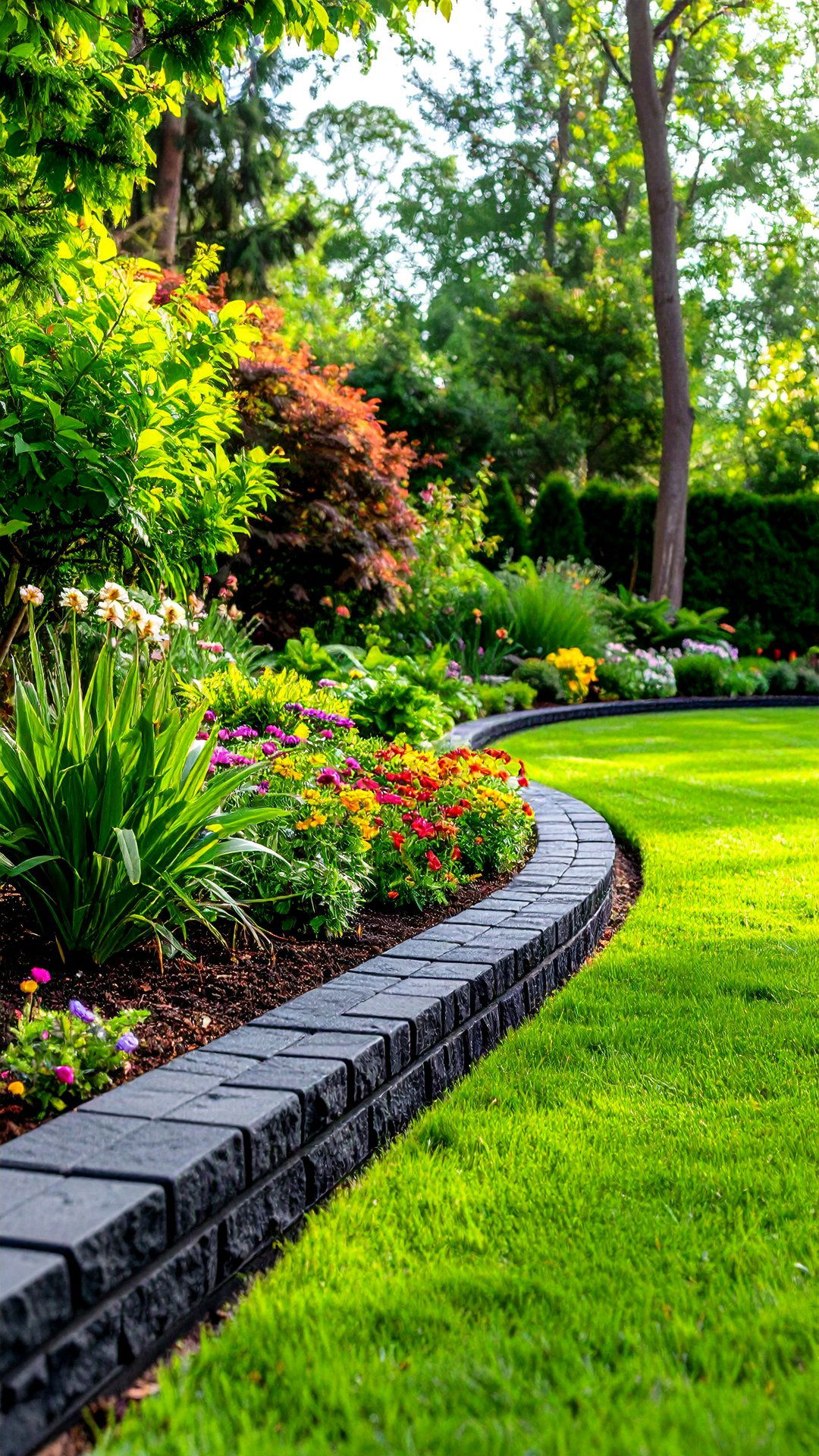
Surprisingly, painting garden edging matt black makes bright foliage pop like a gallery frame. Clean existing bricks with trisodium phosphate, let dry, then roll on breathable masonry paint formulated for freeze-thaw climates. The trend surfaced recently in contemporary small-garden projects, offering a budget way to link borders with modern steel planters. Because bricks still reveal subtle texture through the pigment, the edge looks sophisticated rather than plastic, and if tastes change, you can always strip or repaint without landfill waste.
19. Freestanding Brick Planter Boxes
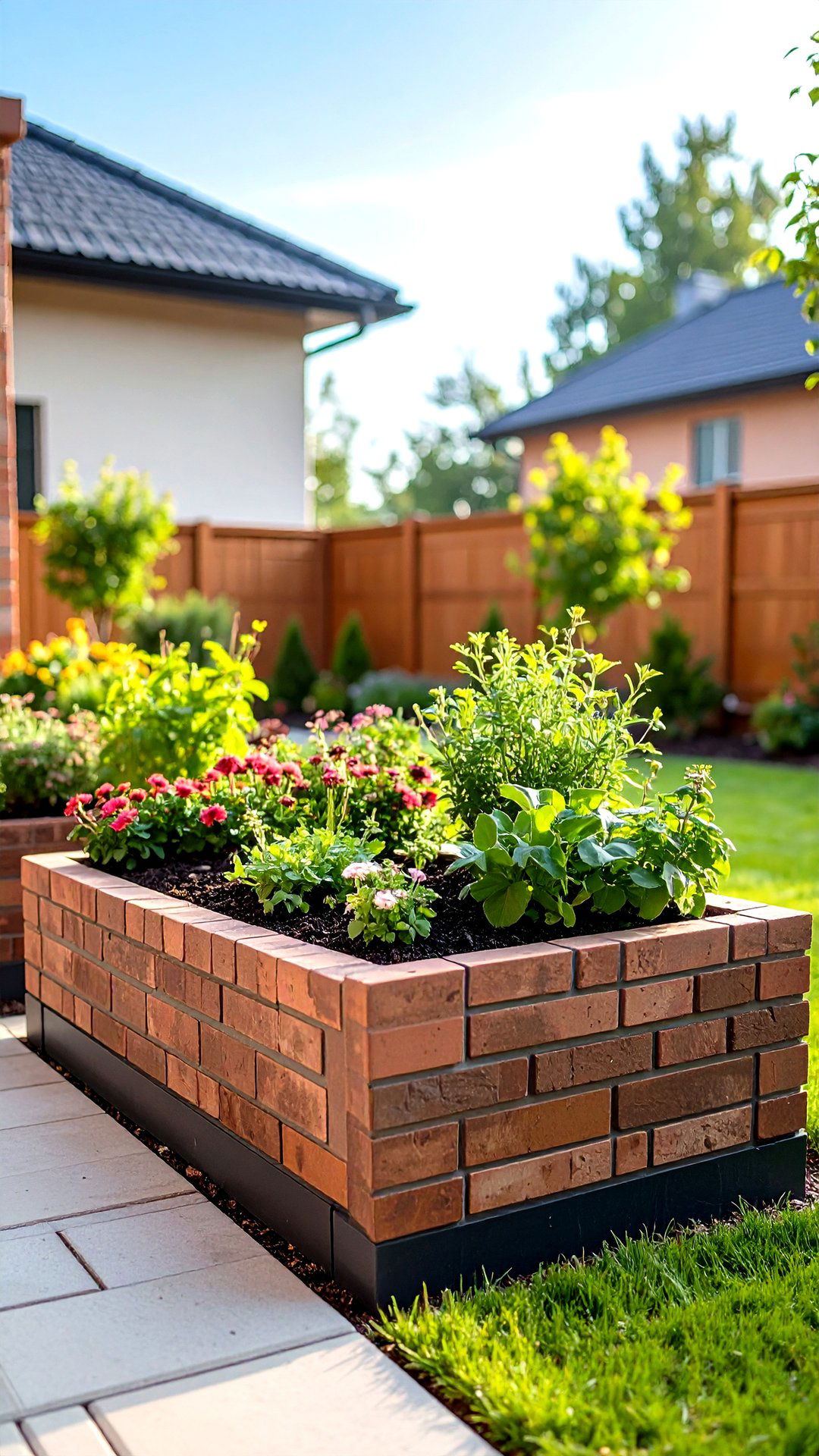
Build waist-high rectangular planters from bricks laid on their narrow edge to reduce wall thickness and lighten weight. Install a DPC (damp-proof course) two courses above grade to prevent soil moisture wicking up and efflorescing. Line interiors with bituminous waterproofing and add drainage holes along the base row. These containers create accessible gardening for people who prefer not to kneel, and by matching brick color to house cladding, the planters feel like a natural architectural extension rather than separate furniture plopped on the patio.
20. Brick Base for Outdoor Kitchen
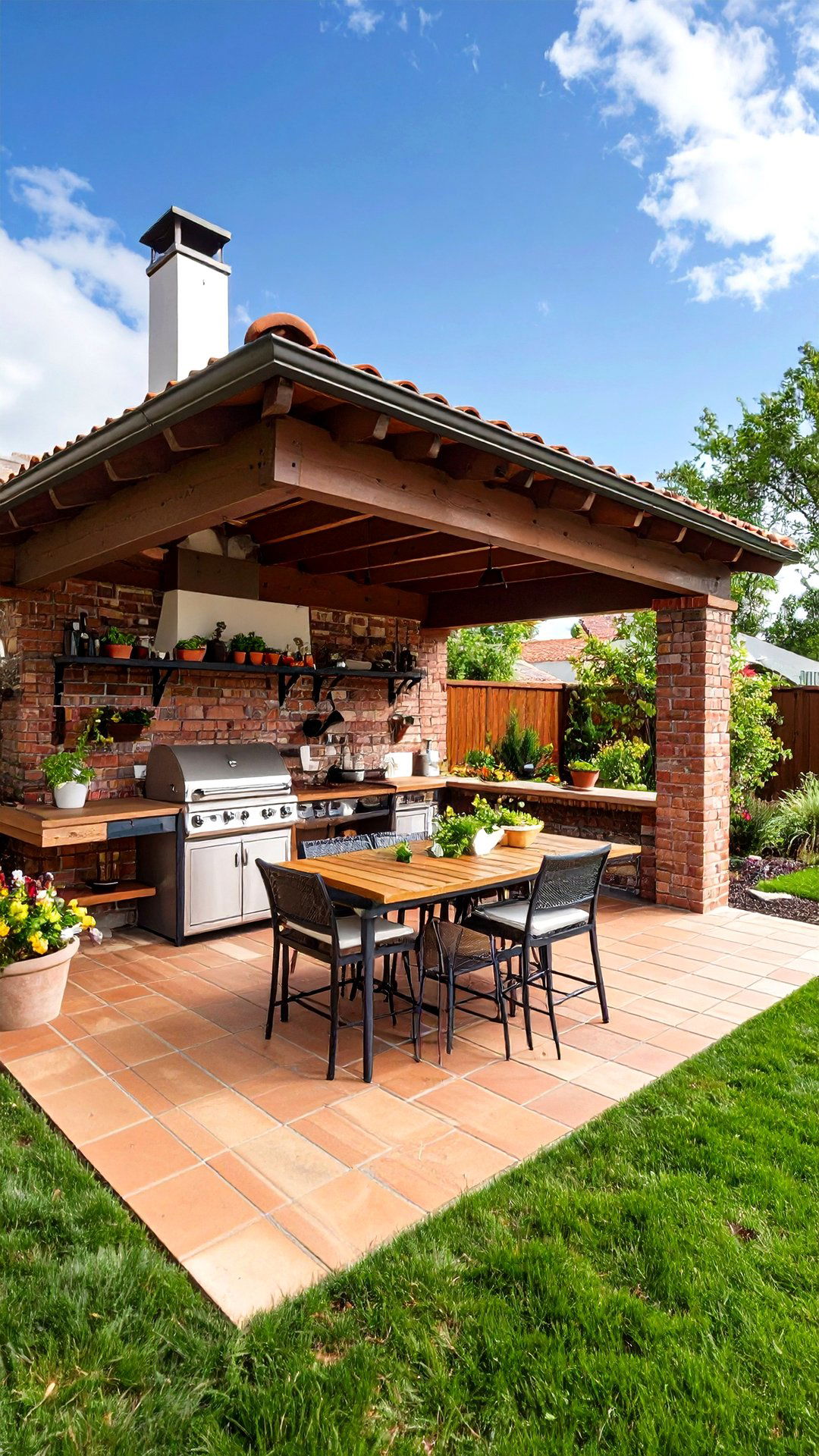
To give a grill station gravitas, construct a U-shaped brick base with open shelves. Embed stainless-steel L-brackets every third course so wooden countertops “float” above without touching hot masonry. Because bricks withstand stray sparks, you can slide coals aside with no fear of melting polymer cabinets. Add a narrow chimney flue behind the grill head to draft smoke upward, keeping dinner guests’ eyes clear and lending your alfresco cooking nook the charm of a Mediterranean hearth.
21. Brick Pillars Flanking Fence Gates

Short brick pillars capped with limestone finials turn a humble timber fence gate into a welcoming portal. Pour 30 cm-square footings below frost depth and core the brick columns around galvanized steel posts anchored in concrete. Ties every second course lock the skin to the post, preventing lean. The masonry shoulders most lateral force, so the gate swings true season after season without sagging hinges. Plant climbing roses at the base, and the roses’ blooms contrast beautifully against the brick’s warm earth tones.
22. Island Bed With Brick Collar
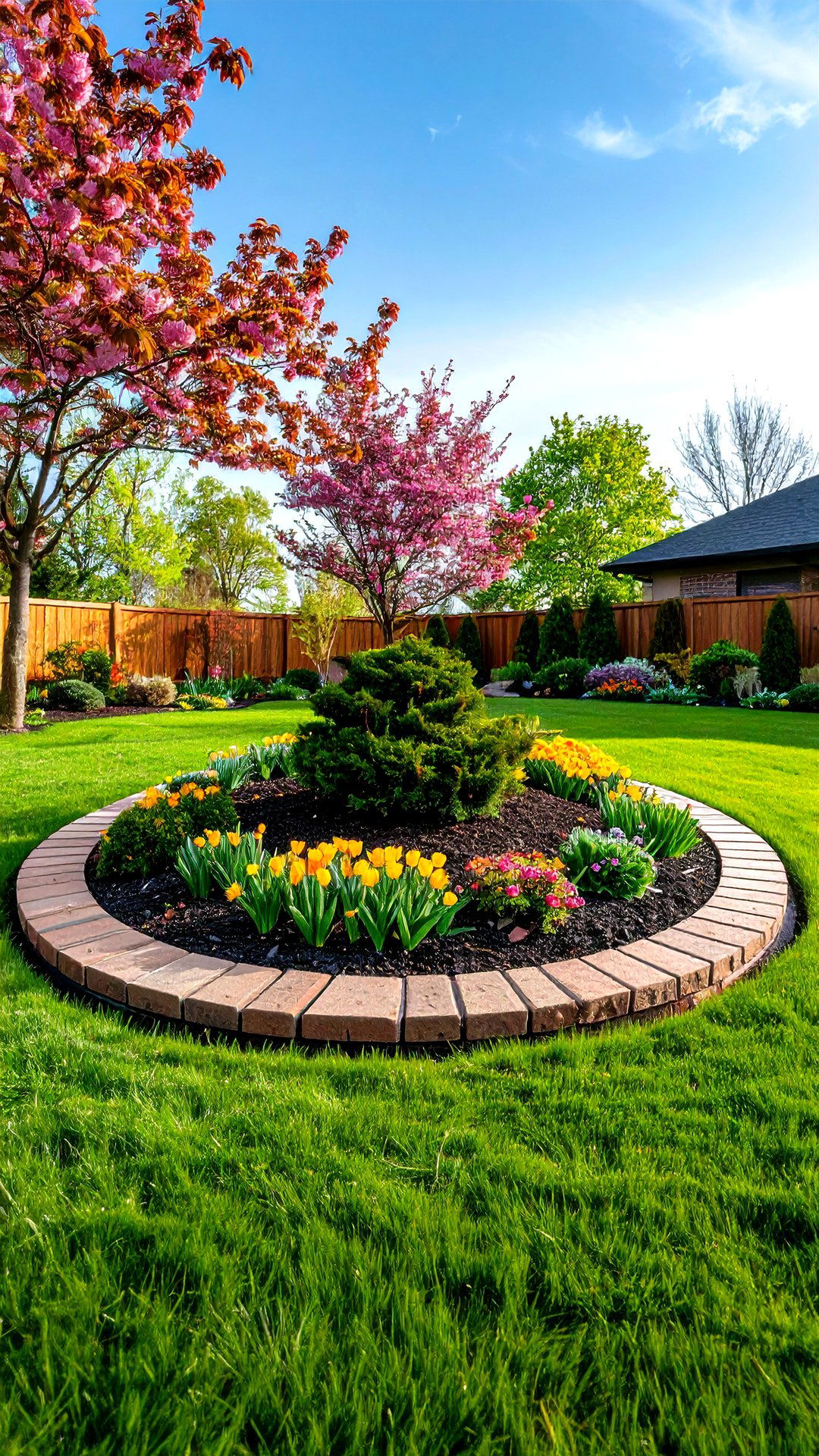
Carving out an oval lawn island edged in bricks lets you showcase specimen shrubs center-stage. Spray-paint the outline, remove sod, then trench for bricks set end-to-end at a slight inward tilt; this counters outward soil pressure. The continuous collar simplifies mowing because you can steer around it in one fluid pass. Plant dwarf conifers or a Japanese maple inside, underplanted with bulbs — each spring the budding branches reflect off slightly glazed brick surfaces, creating an ever-changing living sculpture.
23. Brick Compass-Rose Patio Inlay
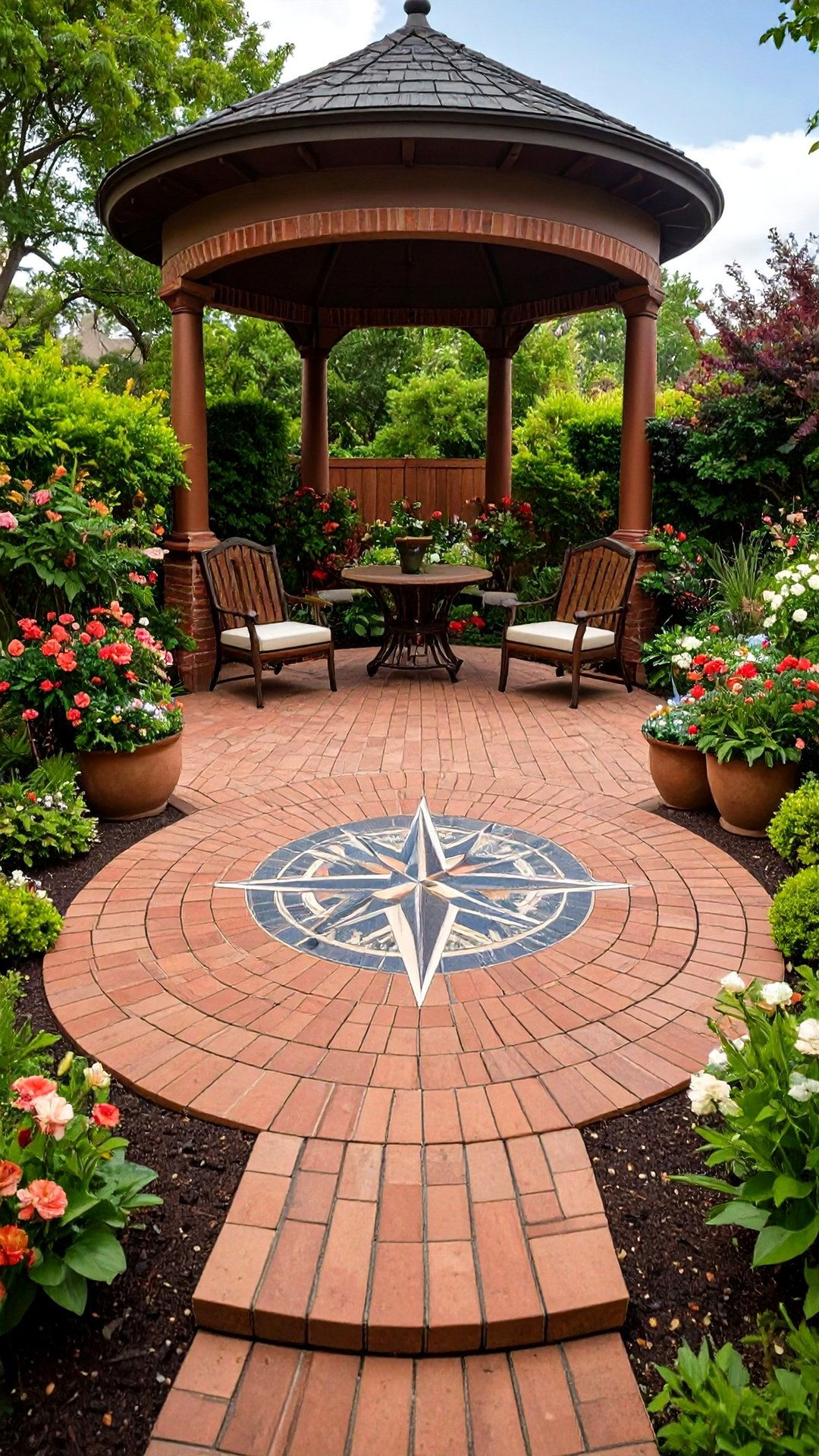
For a dramatic focal point, lay bricks in contrasting colors to form a compass rose centred on a circular patio. Draft the star layout on plywood, cut bricks with an angle grinder to wedge shapes, and assemble on the plywood before transferring onto a mortar bed. Filling joints with bronze-tinted polymeric sand enhances the “antique cartography” effect. Besides sparking dinner-party conversation, the compass motif helps orient seating and path axes, turning what could be a bland round terrace into functional art.
24. Reclaimed-Brick Cottage Path
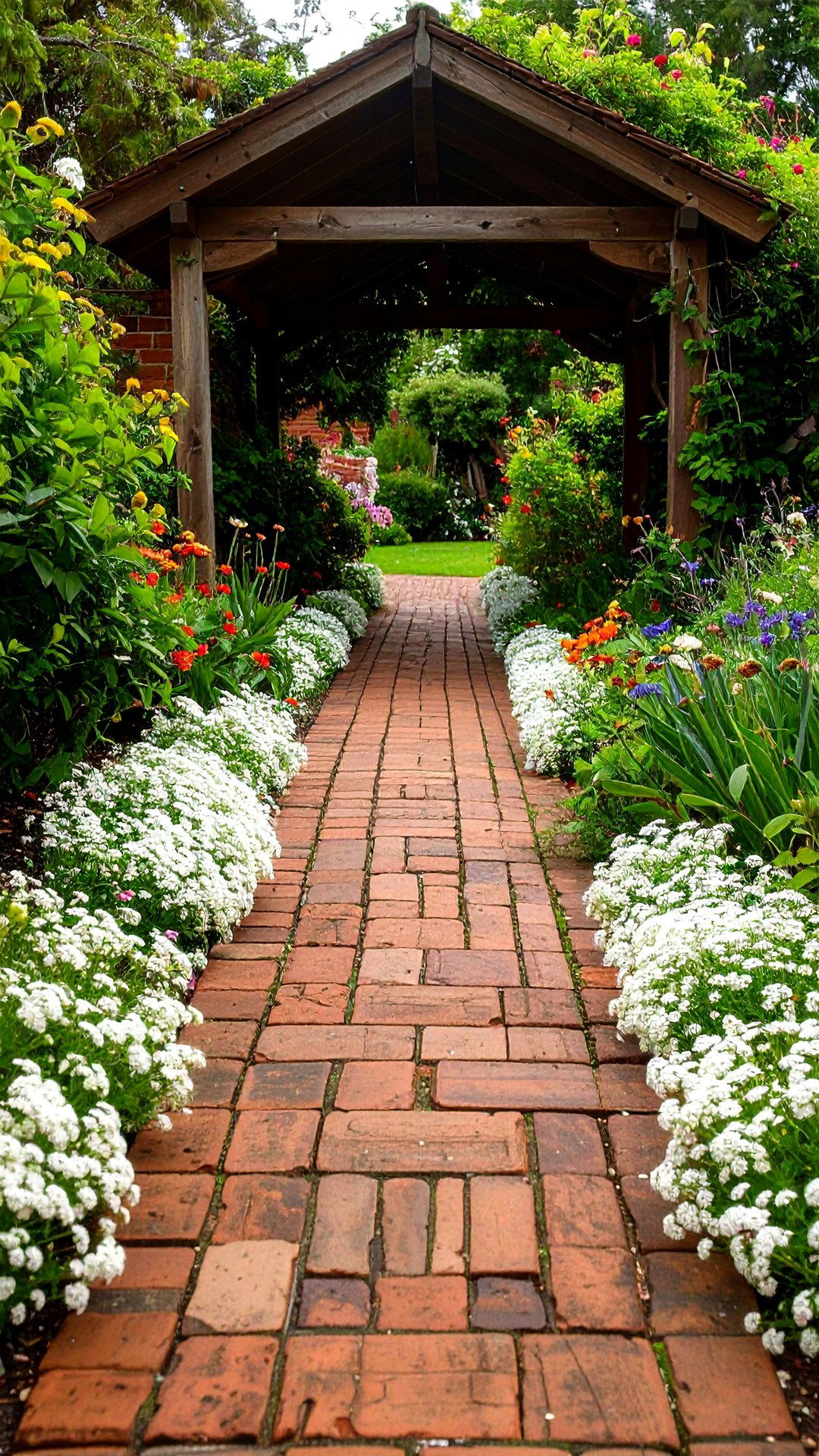
Using weather-worn “clinkers” salvaged from demolition adds instant history to gardens — even new builds. Sort bricks by height, dry-lay them in a casual running bond, and tap the thickest slightly deeper so shoes don’t catch. Leave 1 cm gaps and sweep in sharp sand to lock pieces without freezing them in formal mortar, allowing the path to subtly settle like an old farm lane. Plant self-seeding alyssum at edges; its white froth spills onto bricks, blurring lines between hardscape and nature.
25. Brick Edge Around Reflecting Pond
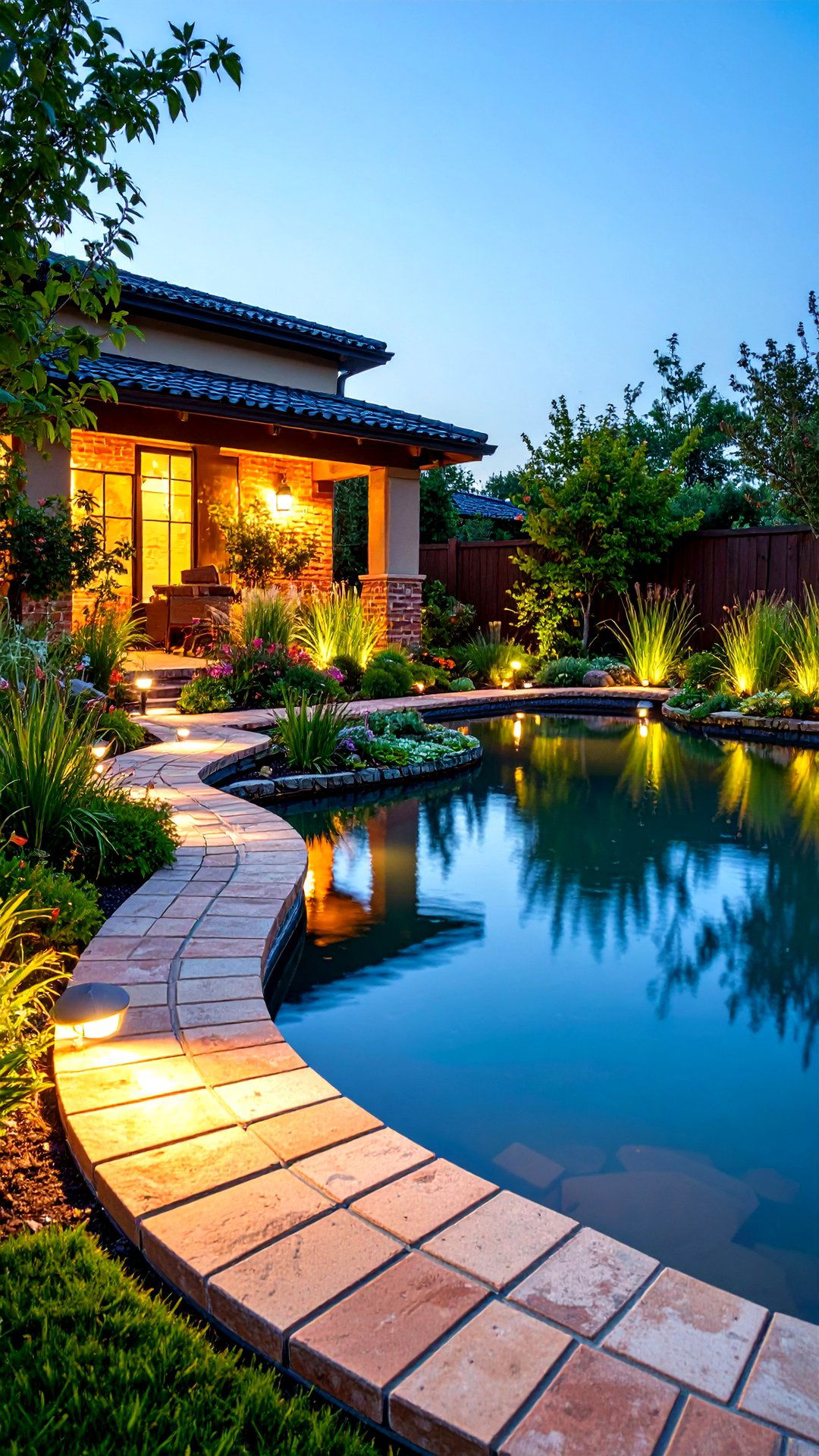
Finally, frame a shallow reflecting pond with a double row of bricks laid flat, sloping the inner course 5 degrees toward water to shed splashback. The wide coping invites visitors to sit and trail fingers through lilies, while the brick’s rusty tones accentuate sky reflections at dusk. Because bricks don’t overheat like dark granite, pond wildlife benefits from cooler margins on scorching afternoons. Add solar path lights that tuck into mortar joints, and the pond glows gently without risking wiring through wet soil.
Conclusion:
Brick remains a masterclass in adaptable landscaping: sturdy enough for structural duties, refined enough for decorative details, and friendly enough for weekend DIY projects. Whether you weave basket-like patios, corral seedlings in raised beds, or sketch sweeping curves through perennials, the material rewards creativity with timeless character and low-effort upkeep. By harnessing brick’s modular predictability yet embracing its natural color quirks, you can craft outdoor spaces that feel both intentional and inviting — gardens that do more than survive the seasons, but grow richer with every passing year.



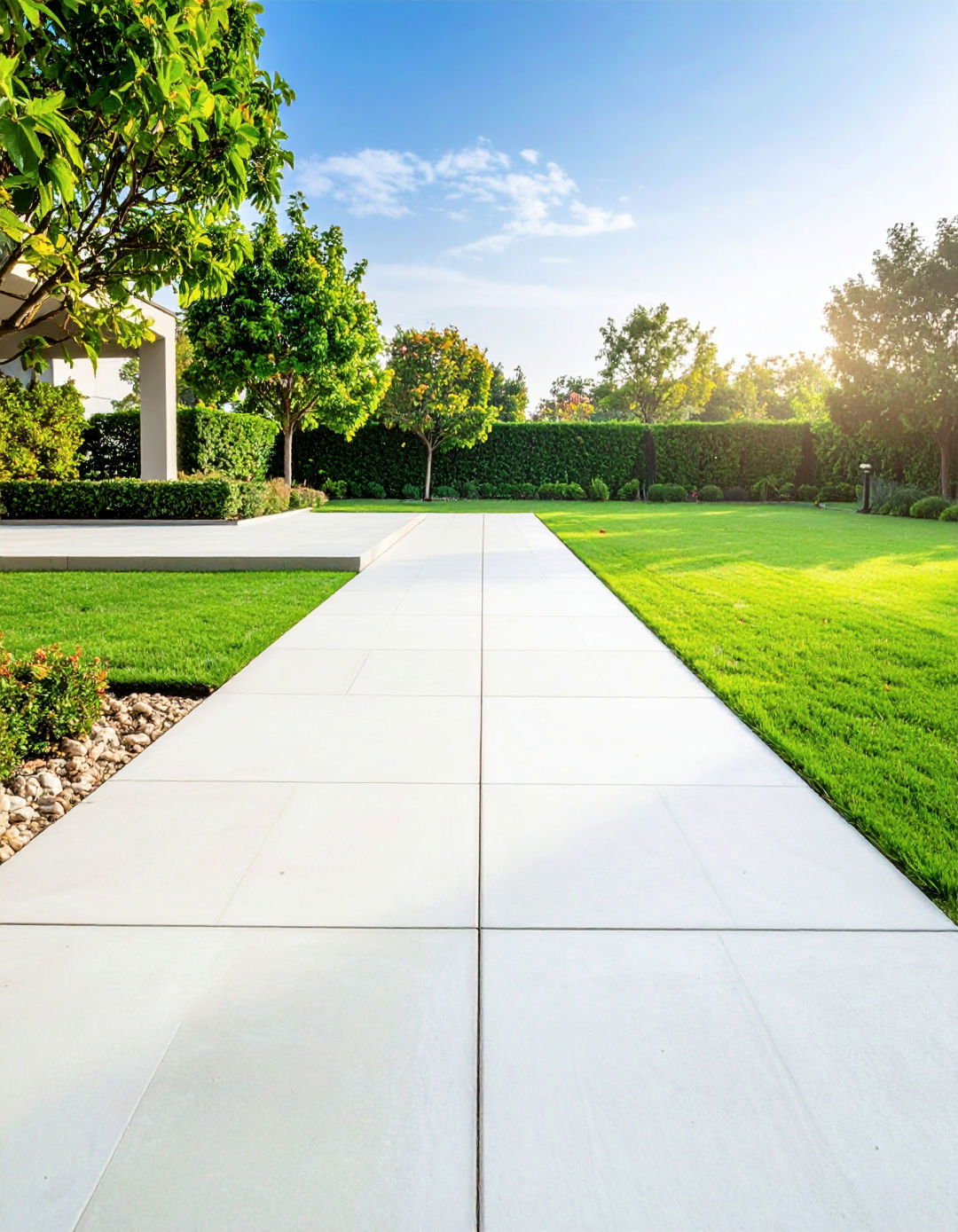

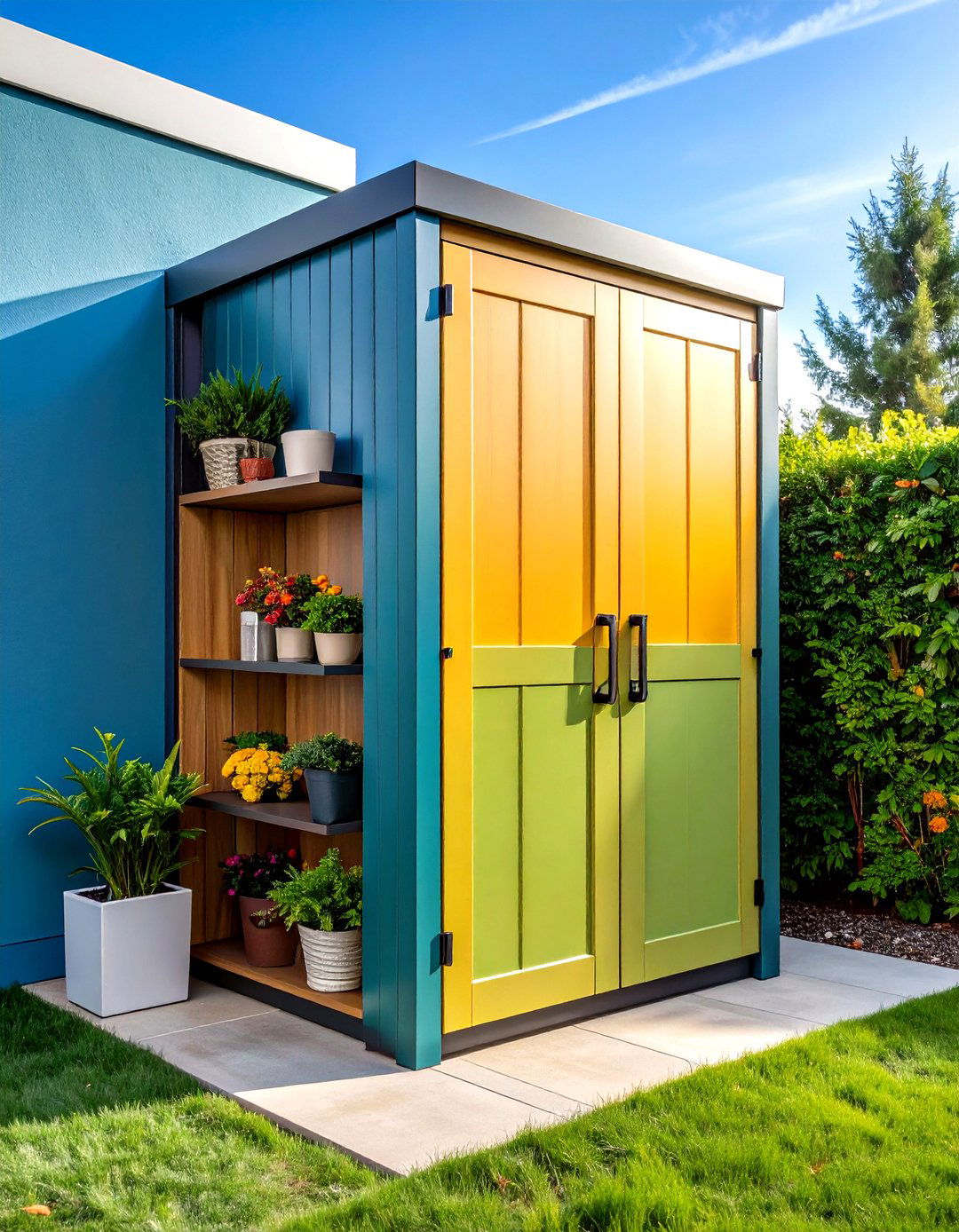



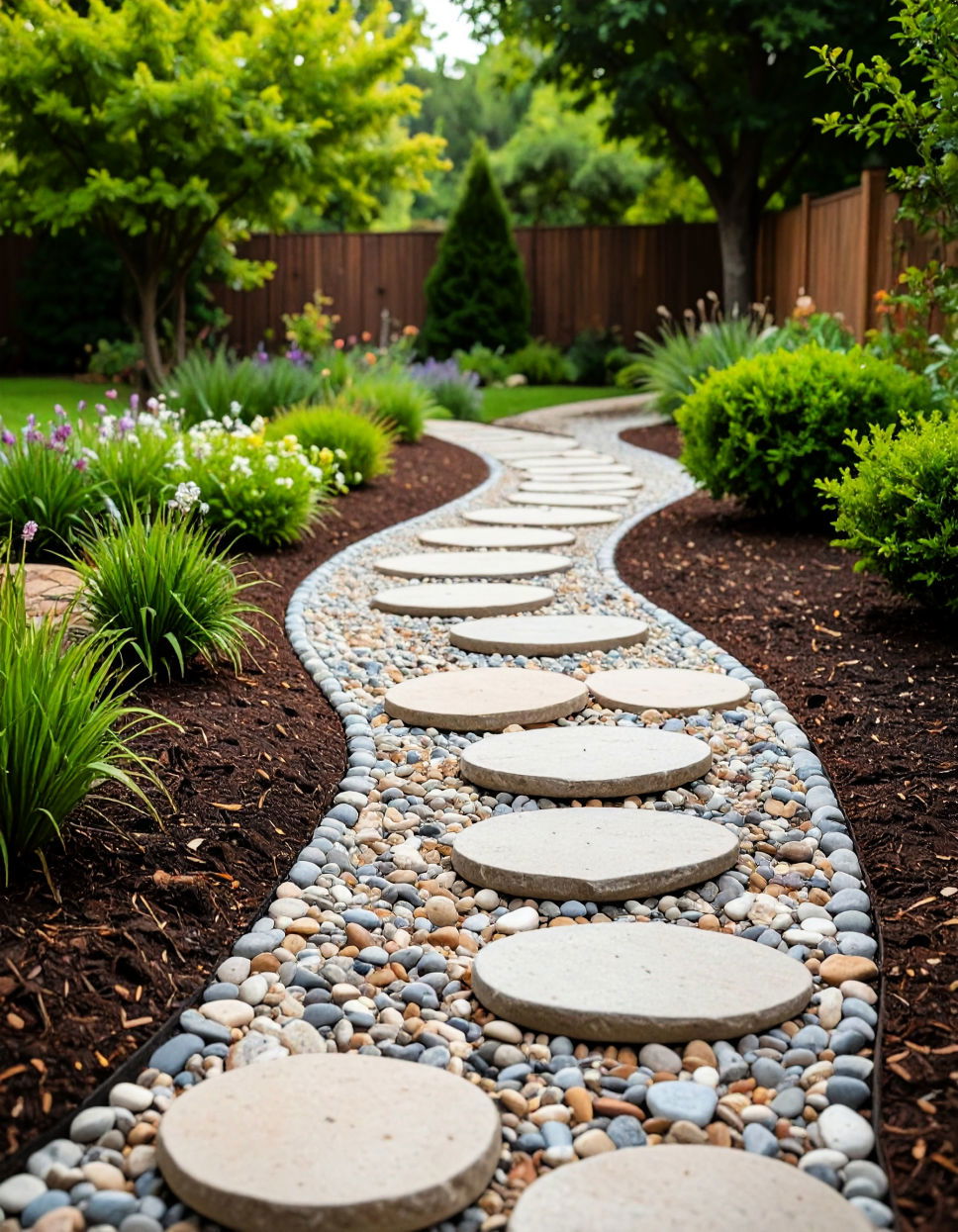
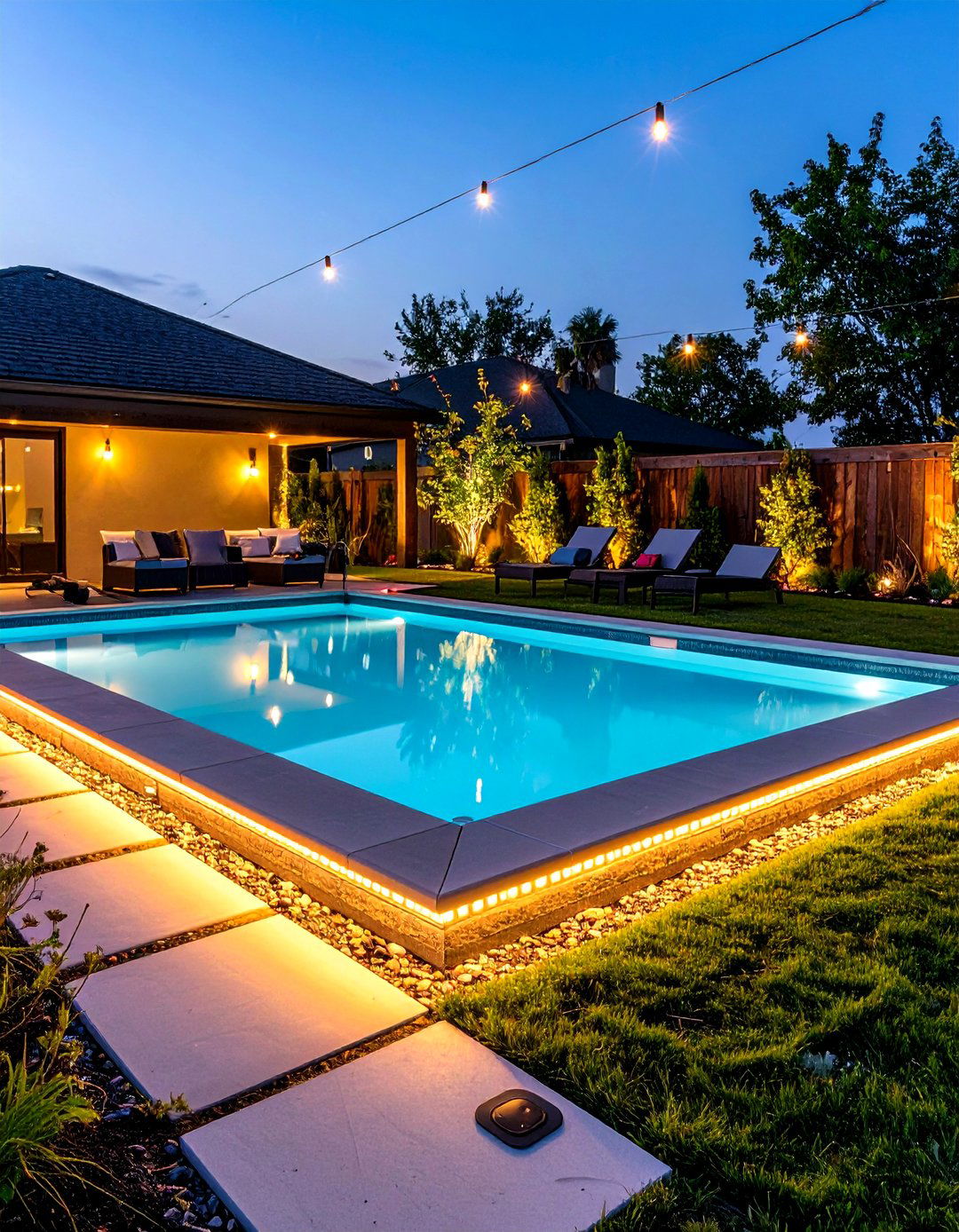
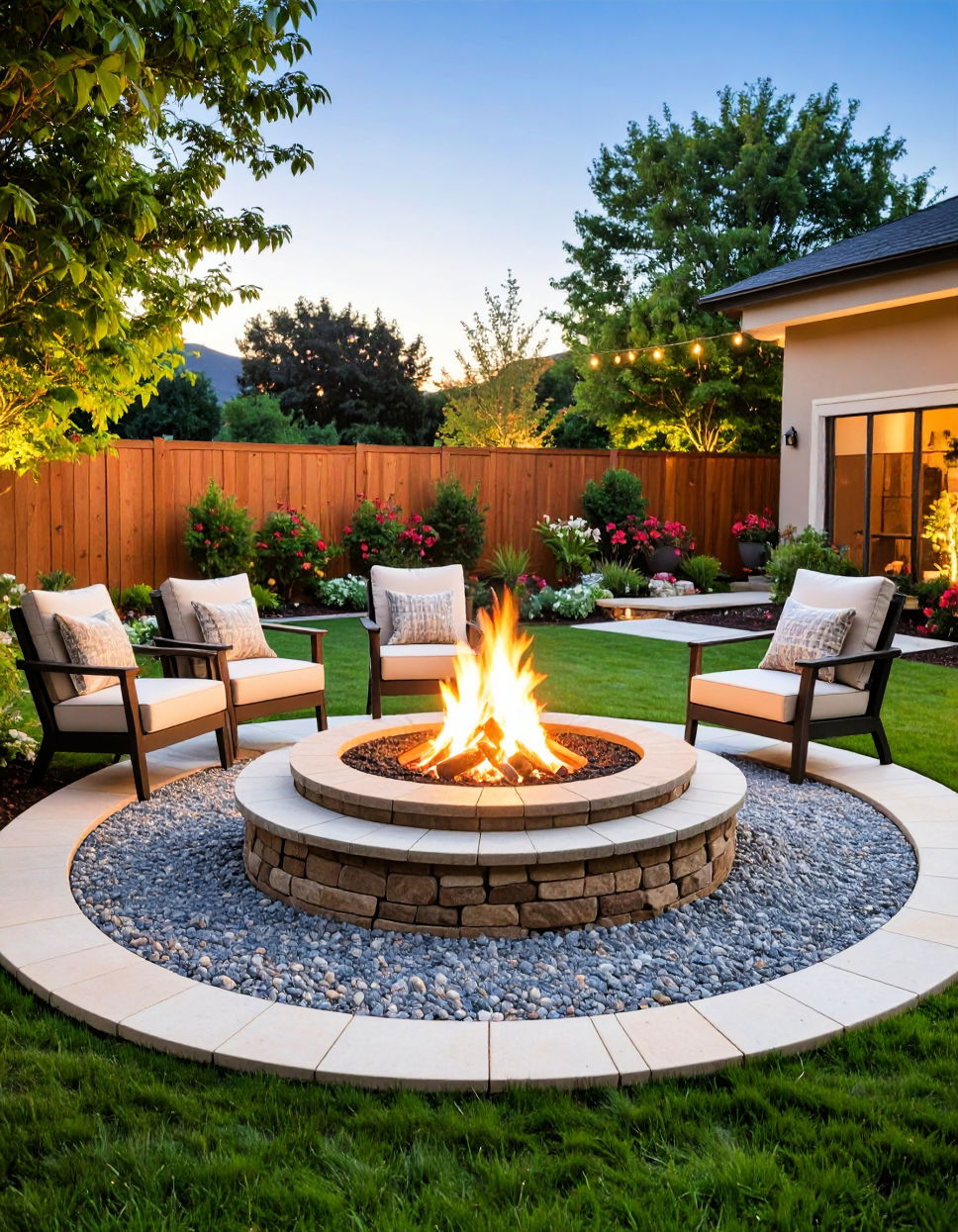



Leave a Reply